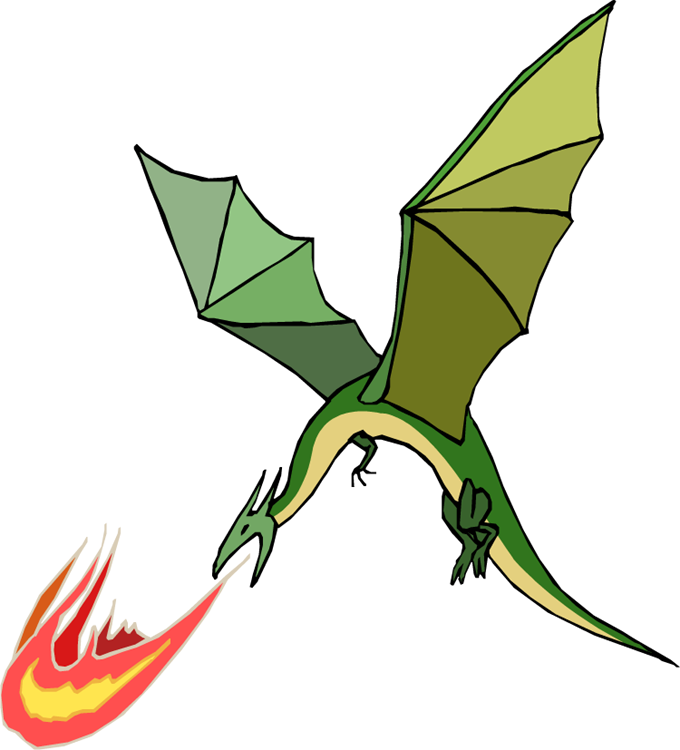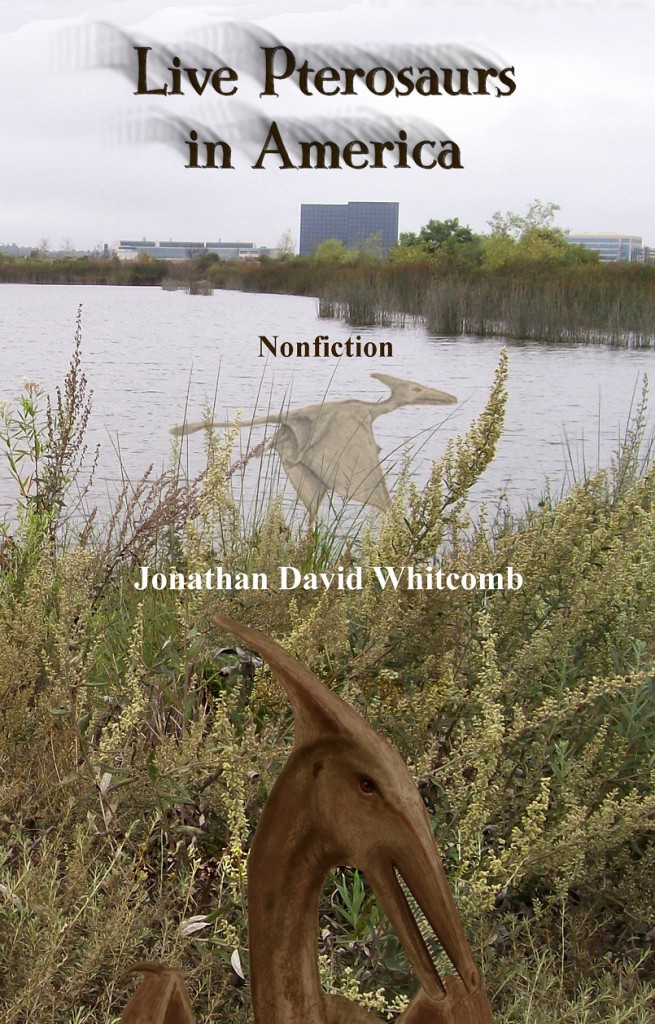
Flying dragons that spew fire and speak English (or any other human language)—those creatures are fictional. But pterosaurs of various species lived in abundance, at some time in the past. The long-tailed varieties, called “basal” or “Rhamphorhynchoid,” could have been called “dragons” in earlier human history. The only requirement is that pterosaurs lived at the time of humans in earlier history.
We now know that those long-tailed flying creatures did live in earlier human history. How do we know? Because those creature live in the present, and they did not sprout from time tunnels to get here: They surely hatched from eggs laid by the previous generation, and so on.
From recent eyewitness testimonies, from around the world, these flying creatures are nothing other than long-tailed pterosaurs. But how could they be related to old legends about large creatures that breath fire? That requires an explanation.
Bird from Hell
In the second edition of the nonfiction cryptozoology book Bird from Hell, the author, Gerald McIsaac, tells us the story of a girl from Kwadacha, in Northern British Columbia, Canada, on a winter night:
[The author’s friend] saw some movement in the shadows and assumed that it was one of the boys spying on her. . . . She believed in facing trouble head on. . . . she charged over to the misguided soul who was irritating her.
As soon as she got close, she realized her mistake. It was not one of the boys, but it was her worst nightmare, a devil bird. She realized she was attacking what she feared the most.
She was not the only one who was scared. The devil bird could sense from the way this girl was attacking that she was a very big, powerful predator. Rather than fight, it decided to retreat, and it did in a manner that left the girl astounded. The devil bird released a cloud of smoke, flapped its wings, and flew away.
That “cloud” emitted by the frightened “devil bird” was not to obscure its escape, notwithstanding the ink cloud used for that purpose by the aquatic octopus. It’s a noxious or poisonous vapor or mist, capable of disabling a dangerous attacker and probably also for putting down prey.
How do I know that? I was informed by one of my associates (anonymous), who has studied ancient accounts of creatures that have that dangerous capability. The account of the “devil bird” behavior reminded me of my friend’s research, which was so obscure that it is unlikely that the author of that book had found out about it before publication.
In addition, the author wrote, “the cloud of smoke was . . . designed to cover the retreat of the animal.” (The author then made clear that it was not literal smoke.) Nothing, in my reading of his book or in my talking with the author by phone, gives any hint that he knew anything about my associate’s research, until a few days before my phone call, when the author received a phone call from my associate, the same person who had done, years earlier, that research.
Smoke does not mean Fire
The idea of fire, in old human cultures and in modern third-world countries, can come from something that glows at night, including bioluminescent creatures. Dragons have been connected to fire partially because at least some long-tailed pterosaurs are bioluminescent. The idea of fire-breathing (in flying dragons), however, probably originated partially from the mist that at least some of them emit from the head (not necessarily the mouth). But mist can be non-smoke, and a glow can be non-fire.
Where do Fire-Breathing Dragons Come From?
Look at this from another angle: could any real animal have inspired those old tales? One possibility has become obvious: eyewitness accounts of apparent bioluminescent long-tailed pterosaurs.
Both grandmothers and wolves are actual living beings of this world, even though the story “Little Red Riding Hood” is a fictional story. In a similar way, old legends need not be 100% fictional.
Fiery Flying Serpent and Flying Dragons
Translators of the King James Version of the Bible, centuries ago, lived before the English language had the words “dinosaur” and “pterosaur,” so don’t expect to find either word in an old Bible.
Pterosaurs, or Flying Dragons, in California
Hoaxes and comical headlines were common, however, in the nineteenth century, but they were still greatly outnumbered by articles based on actual events . . .
. . . gives children the opportunity to improve hand control and artistic ability.
________________________________________________________________

Paperback nonfiction cryptozoology book on eyewitness encounters with modern living pterosaurs in the U.S.A: Live Pterosaurs in America, third edition
From the introduction of this book by Jonathan David Whitcomb:
This book might make a few Americans uneasy to walk alone at night; my intention, however, is not to frighten but to enlighten as many readers as possible to know about live-pterosaur investigations. Those who’ve been shocked at the sight of a flying creature that “should” be extinct—those eyewitnesses, more numerous than most Americans would guess, need no longer be afraid that everyone will think them crazy, and no longer need they feel alone. Those of us who’ve listened to the American eyewitnesses, we who have interviewed them, we now believe. So, if you will, consider the experiences of these ordinary persons (I’ve interviewed most of them myself) and accept whatever enlightenment you may.
Live Pterosaurs in America (third edition) is sometimes in the top 4% in ranking of books selling on Amazon.com (early on July 24, 2012, in the top 3%). It is sometimes a contender for most popular nonfiction cryptozoology book on Amazon. Purchase your own copy online.


